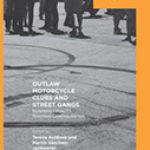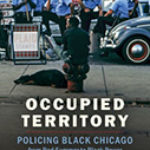The Taming Of New York’s Washington Square: A Wild Civility

Author: Erich Goode
Publisher: New York, NY: New York University Press, 2018. 297p.
Reviewer: Gerald W. McFarland | September 2019
Early in this fine study, Erich Goode reports that among all the large public parks in New York City, Washington Square Park in Greenwich Village is measurably the safest. This is true even though those who frequent the park are drawn from varied classes and ethnicities, come there for diverse purposes, e.g., mothers who bring their young children to the park’s playgrounds, and drug dealers who pursue their trade (mostly selling marijuana) elsewhere in the park. Numerous minor infractions of park rules and city ordinances occur, but more serious crimes are rare. The presence of uniformed officers from PEP (Parks Enforcement Patrols), the NYPD, and, at times, NYU campus cops helps deter disorderly behavior, but Goode notes that their job is made easier by an underlying spirit of civility and tolerance among the park’s visitors. How, Goode wants to know, do these and other elements work together to create a vibrant, relatively safe urban space?
Goode divides his text into chapters on key categories—public space, deviance, social control, race, and sex and gender—and applies two techniques in investigating each: interviews with park users, and his own close observation. At one point (most of his research was done in 2015 to 2017) he conducted sixty interviews in which he asked his subjects to rate twenty-two behaviors “wrong,” “not wrong,” or “not sure.” The greatest consensus regarding “wrong” behaviors came in the category of “littering,” which ninety-eight percent of his informants condemned as “wrong,” suggesting that it was seen as an offense against their sense of shared space. Other minor forms of rule-breaking—sleeping on a bench or feeding the squirrels—were considered as “wrong” by less than twenty-five percent of respondents. Not a single one of his informants felt that the presence of interracial couples was “wrong,” and several chided him, offended that he’d asked the question. Longer interviews with other park users and observations of the park’s habitués enable him to salt his narrative with colorful examples that reinforce his analysis.
Throughout his text Goode ties his findings to relevant scholarly literature on deviance and social control. He skillfully delineates what he finds useful or not so useful about these authorities. For instance, he admires Jane Jacobs’ description of Washington Square Park, but he argues that her classic thesis that “eyes on the street” are crucial to maintaining social order in urban neighborhoods doesn’t fit what he observed in Washington Square Park. “Eyes on the street” can have a repressive element, whereas in Washington Square Park a “wild civility” is achieved by tolerating diverse behaviors. He is sharply critical of the George Kelling and James Q. Wilson’s “broken windows” thesis, which argues that indifference to small infractions of the law leads to escalating disorder and eventually serious crimes: rape, robbery, and murder. Goode observes that this is not the case in Washington Square Park, where minor law-breaking is commonplace and major crimes virtually nonexistent.
Rich in detail and analysis, Eric Goode’s book portrays Washington Square Park through the eyes of an affectionate observer. His The Taming of New York’s Washington Square is an important addition to the literature on this famous public space.
Gerald W. McFarland, Professor of History, Emeritus, University of Massachusetts Amherst


